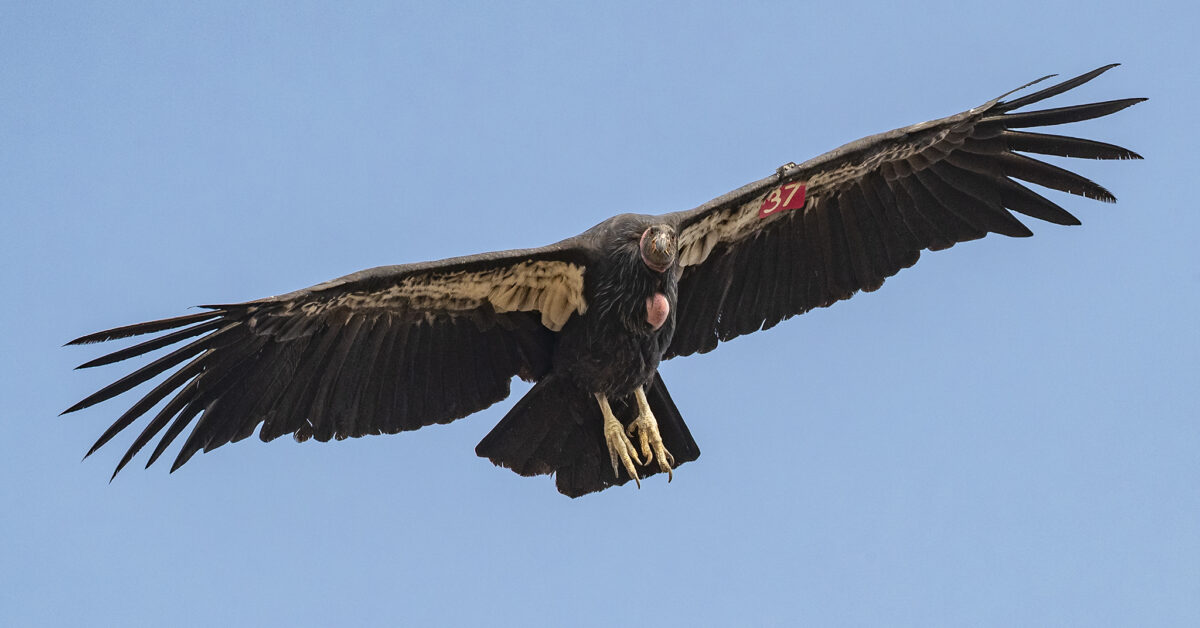Summary of A Momentous Hatch – San Diego Zoo Wildlife Alliance Stories:
The San Diego Zoo Safari Park celebrated a significant milestone by hatching the 250th California condor egg on March 16. The egg, laid by Mexwe and fathered by Xol-Xol, signifies a triumph in the conservation efforts for the species, which was once on the brink of extinction. Xol-Xol, who has contributed to the species’ recovery by fathering over 40 chicks, was one of the last 22 California condors rescued in 1982. He became a part of the California Condor Recovery Program, which aims to restore the species’ population.
The newly hatched chick, Emaay, is part of ongoing efforts at the Safari Park to incubate, hatch, and raise condors for release into the wild. Emaay’s egg was carefully managed by wildlife specialists, including placing it in a controlled incubator and using a replica egg to allow the parents to continue their nesting behaviors. After careful monitoring and successful hatching, Emaay represents hope for the future of California condors, emphasizing the importance of conservation work and collaborative efforts.
The Safari Park, alongside various partners, is actively working to increase the condor population, which has grown from just 22 birds to over 560. This growth underscores the critical role of conservation programs in the survival of endangered species. The Safari Park’s work includes breeding and reintroducing efforts and addressing challenges such as habitat loss, lead poisoning, and disease that threaten the condors and their ecosystems. Through innovative solutions like vaccine trials for avian influenza, the program aims to safeguard the species’ future. Emaay’s expected integration into the wild in 2025 highlights the continued success and dedication to conserving the magnificent California condor.
– The 250th California condor hatching at San Diego Zoo Safari Park represents a significant milestone in conservation efforts for this critically endangered species.
– The involvement of the California Condor Recovery Program showcases a successful collaborative effort to save the species from extinction, highlighting the importance of human intervention in wildlife conservation.
– Advanced techniques such as egg candling, incubation, and CT imaging are crucial in ensuring the health and viability of condor eggs and chicks.
– The story of Xol-Xol, a California condor who contributed significantly to the recovery of his species, underscores the impact of individual animals on conservation efforts.
– Ongoing challenges such as habitat loss, lead poisoning, and disease threaten the California condor, emphasizing the need for continued conservation work.
The hatching of the 250th California condor at San Diego Zoo Safari Park marks a triumphant moment in the journey to recover one of North America’s most emblematic birds from the brink of extinction. This achievement is not just a number but a testament to the resilience of nature when given a chance through dedicated conservation efforts. The California condor, once teetering on the edge of disappearing forever, is now making a slow but steady comeback, thanks to the concerted efforts of organizations like the San Diego Zoo Wildlife Alliance.
Integral to the success of these efforts has been the California Condor Recovery Program, a collaboration model that brings together federal and state agencies, non-profit organizations, and zoological institutions. This program’s approach has been multifaceted, tackling the complex challenges of breeding, managing genetic diversity, and preparing birds to return to the wild. Efforts like these underscore the critical role of human intervention in reversing the fortunes of species faced with the specter of extinction.
One of the innovative techniques employed in conserving the California condor is egg candling, where a light source is used to observe the growth and development of an embryo inside an egg. Additionally, when complications are suspected, advanced imaging technology, like computed tomography (CT) scans, can offer invaluable insights without compromising the egg’s integrity. These methods ensure each egg’s best chance of developing into a healthy chick, crucial for a species whose numbers once dwindled perilously low.
Central to this narrative of hope and survival is Xol-Xol, a California condor who embodies the profound impact an individual animal can have on the preservation of a species. Rescued as a chick and having spent his life under the care of conservationists, Xol-Xol has sired over 40 chicks, contributing invaluable genetic diversity to the condor population. His story is a remarkable example of how dedicated care and management can aid in a species’ recovery, with each chick representing a beacon of hope for the future.
Despite these successes, California condors still face significant threats from habitat loss, lead poisoning from ingested ammunition, and diseases that can decimate wild populations. These challenges highlight the importance of ongoing conservation efforts and the need for innovative solutions to ensure the condors’ survival. For instance, the vaccination trial against the highly pathogenic avian influenza is critical in safeguarding the population against emerging threats.
The conservation of the California condor serves as a compelling narrative that combines the power of science, the dedication of conservation professionals, and the resilience of nature itself. As we celebrate hatching the 250th chick at San Diego Zoo Safari Park, we are reminded of the continuous commitment required to protect and preserve the species. The journey of the California condor from near extinction to a slowly recovering population offers valuable lessons in wildlife conservation, underscoring the possibility of redemption for even the most endangered species.
Engagement with live streams, like the Condor Cam, and support for conservation hubs play a vital role in fostering a connection between the public and conservation efforts. Through education and awareness, we can rally more support for the California condor and other species facing similar plights. As we look toward the future, the story of the California condor stands as a beacon, guiding ongoing efforts to ensure that these magnificent birds continue to soar over the landscapes they once dominated. Through continued collaboration, innovation, and dedication, we can build on this success, securing a brighter future for the California condor and the ecosystems they inhabit.

